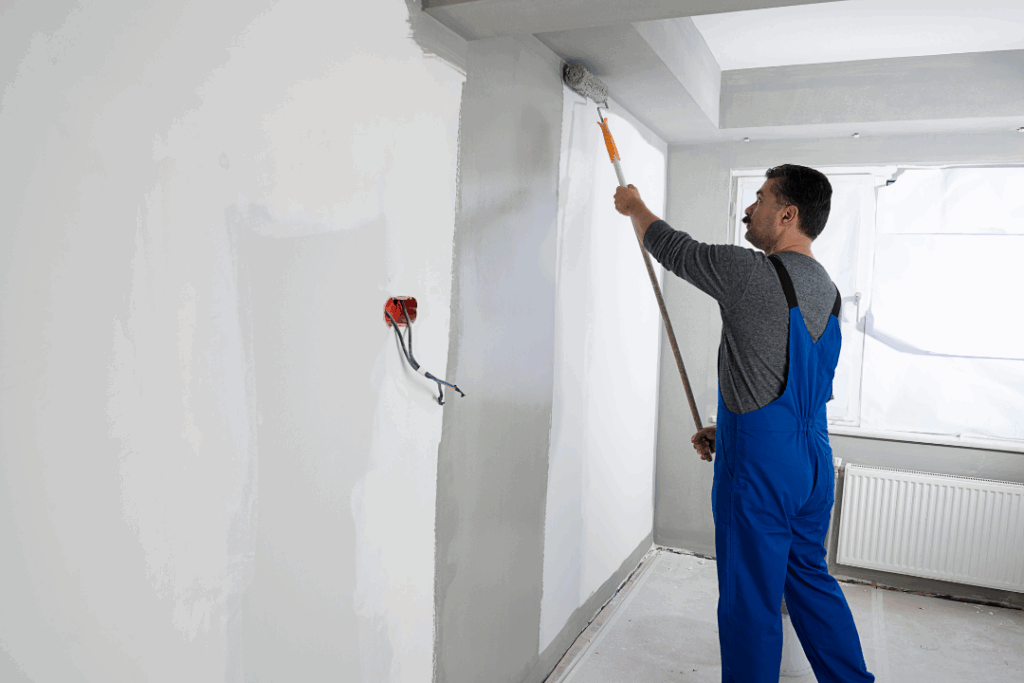Painting can instantly transform a room, but it’s not always as simple as slapping on a fresh coat. Sometimes, underlying drywall issues can sabotage even the most professional-looking paint job. Knowing whether to repaint or replace drywall is essential to achieving a durable, flawless finish.
In this blog, we’ll help you determine when it’s okay to repaint—and when it’s time to start fresh with new drywall.
1. Start with a Visual Inspection
Before reaching for a paintbrush, take a close look at your walls. Minor wear like scuffs, nail holes, or slight discoloration can usually be handled with prep work and repainting. But significant damage like deep cracks, bubbling, or mold signals a need for replacement.
Check for:
- Bulging or sagging areas
- Water stains or mold growth
- Large holes or crumbling surfaces
- Repeated patchwork from previous repairs
Pro tip: Use a flashlight and run your hand across the surface. Texture irregularities or soft spots could indicate deeper issues.
2. When Repainting Is Enough
In many cases, repainting is a cost-effective way to refresh your walls, especially when the drywall underneath is still in good condition.
Go ahead and repaint if:
- The surface is sound with only cosmetic damage
- There are minor dents or nail holes
- You’re just covering up outdated paint
- There are light stains that can be sealed with primer
Steps to prep:
- Clean the surface to remove dust and grime.
- Fill small holes or imperfections with spackle.
- Sand smooth and apply a high-quality primer.
- Choose a topcoat that suits your desired finish and room function.
3. When You Should Replace Drywall
Sometimes, paint alone won’t cut it. If your walls show signs of deeper damage, replacing the drywall will ensure your new paint looks good—and lasts.
Consider replacing drywall if:
- There’s water damage, warping, or mold
- Large sections are cracked or crumbling
- You see bubbling or separation in drywall tape
- Previous repairs are poorly done or excessive
Pro tip: Mold remediation and drywall replacement go hand in hand. If mold is present, don’t repaint—remove and replace affected drywall immediately.
4. The Middle Ground: Partial Drywall Repair
You don’t always have to choose between full replacement and repainting. In many cases, patching a section of drywall is enough. This works well for areas with localized damage such as a hole from a doorknob or small water damage in a corner.
When to patch:
- Single wall sections are damaged
- Damage is not near seams or load-bearing areas
- The rest of the wall is structurally sound
Pro tip: Seamless blending between old and new drywall requires expert mudding, sanding, and priming. Hire a pro to avoid visible joints or texture mismatches.
5. Don’t Skip the Primer
No matter how perfect your drywall is, priming is essential—especially when repainting over repaired or newly installed surfaces. Primer ensures paint adheres properly, evens out absorbency, and prevents stains from bleeding through.
Use primer if:
- You patched holes or sanded areas
- The original paint is glossy or dark
- You’re painting over new drywall
- There are water stains or smoke damage
Final Thoughts
Painting is a powerful way to update your space—but it only looks as good as the surface beneath it. Take time to assess your drywall before painting to avoid frustration and costly redos. Whether you’re touching up or starting over, making the right decision will give you lasting, professional-looking results.

